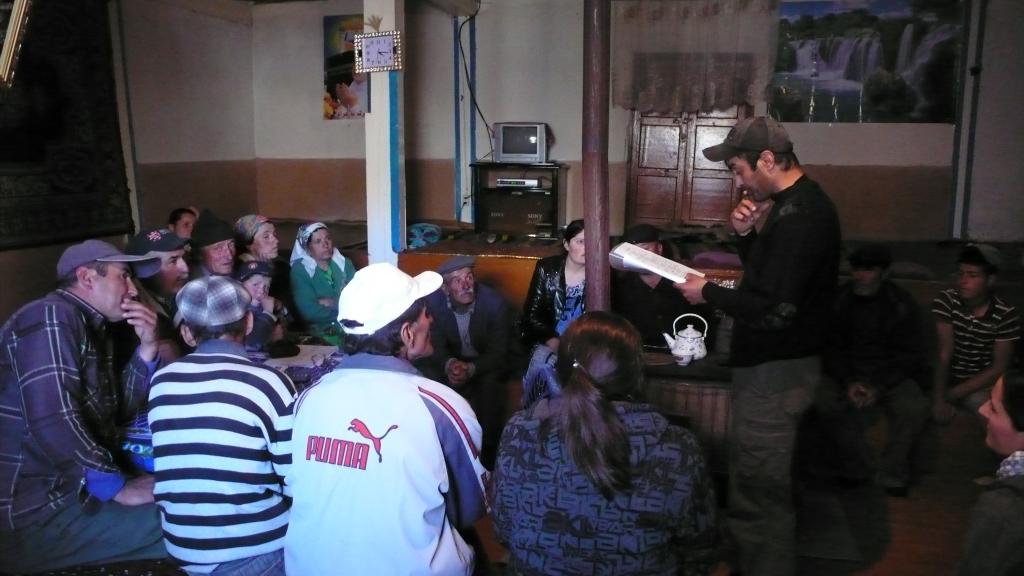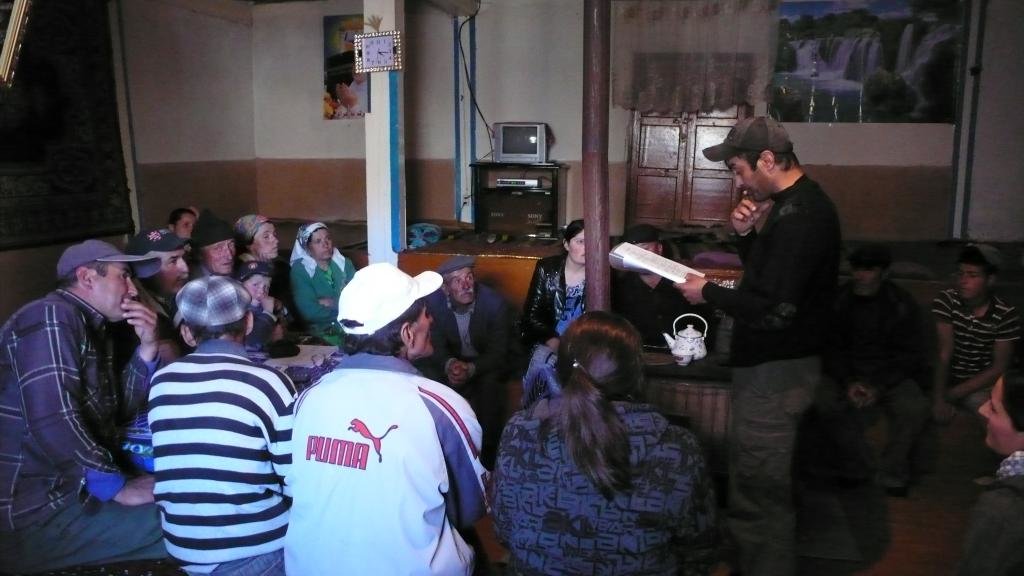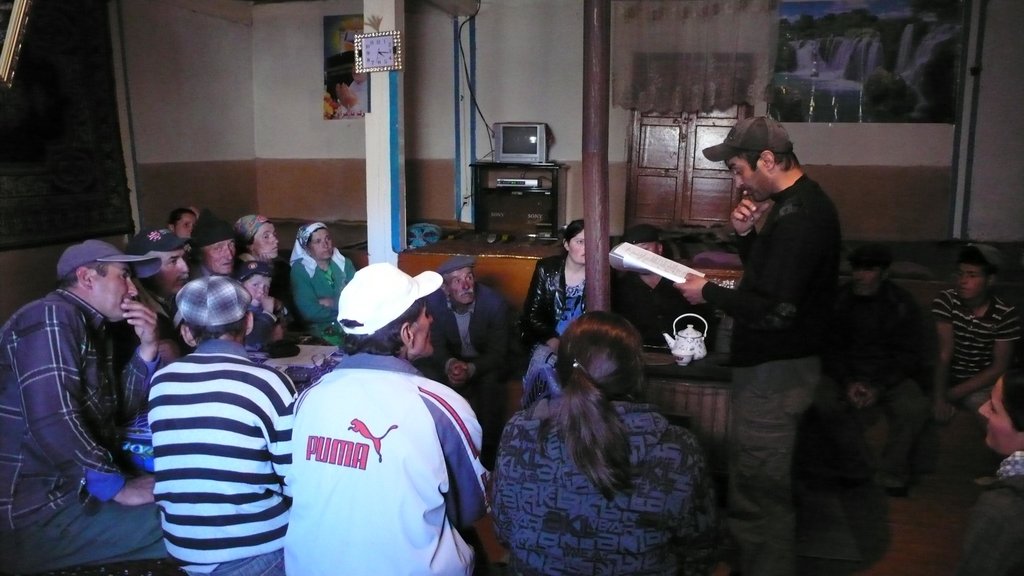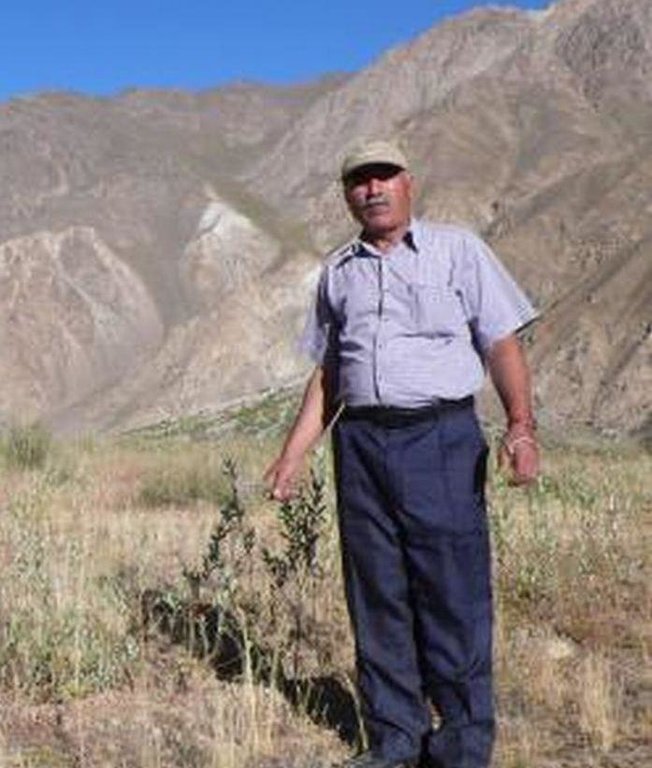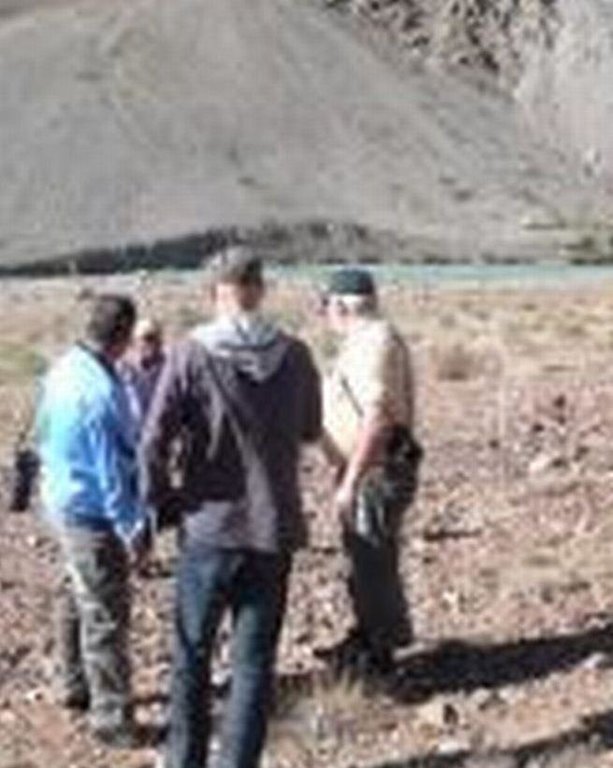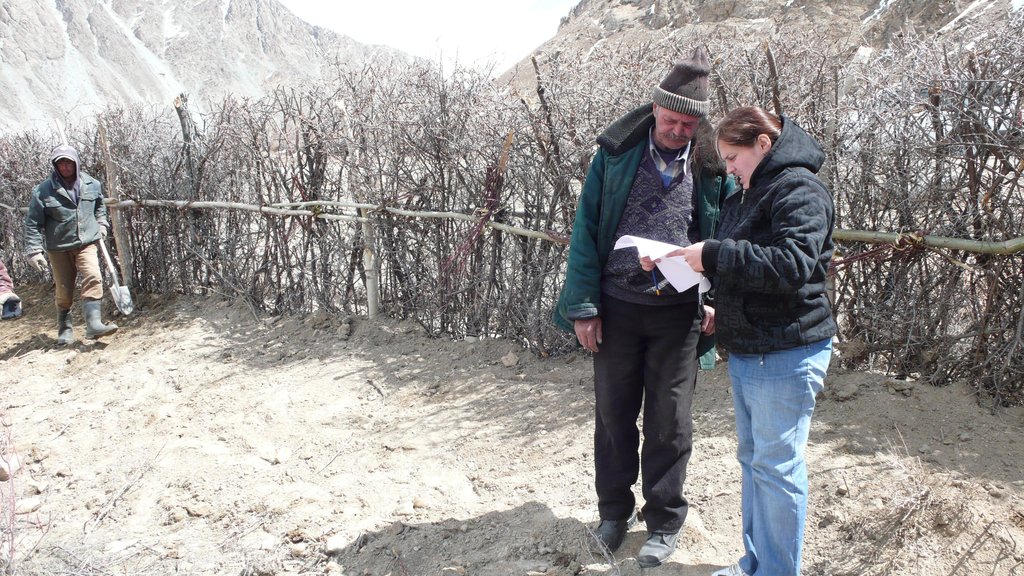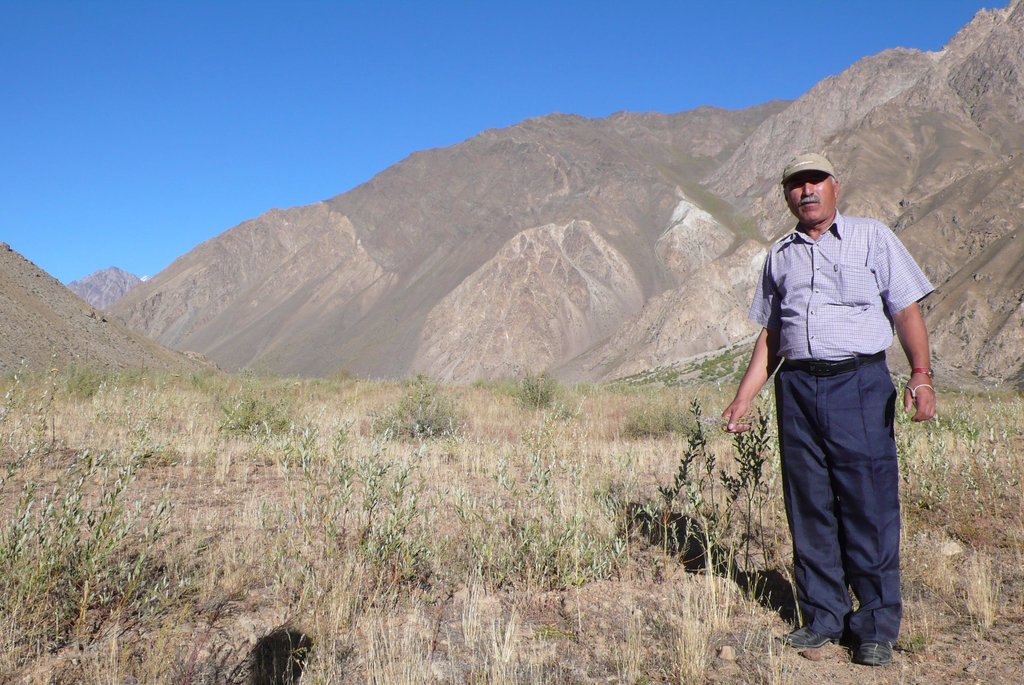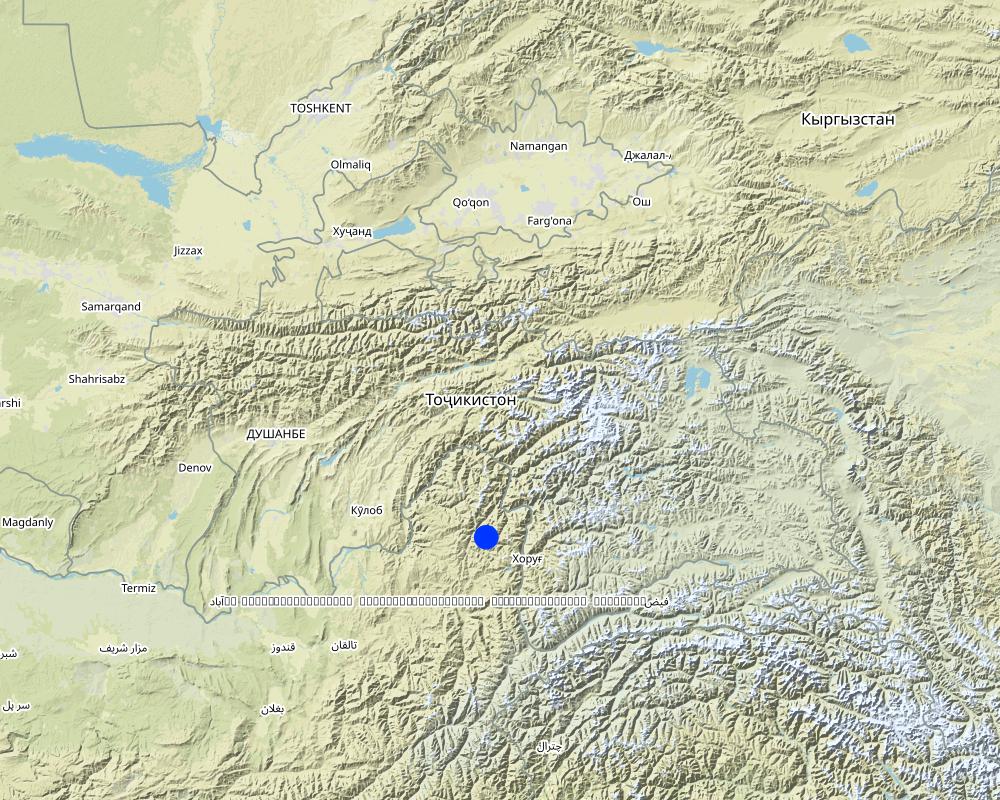Savings Book Approach [Tajiquistão]
- Criação:
- Atualização:
- Compilador/a: Roziya Kirgizbekova
- Editor: –
- Revisores: David Streiff, Alexandra Gavilano, Joana Eichenberger
Sberegatelnaya knizhka (Russian)
approaches_2445 - Tajiquistão
Veja as seções
Expandir tudo Recolher tudo1. Informação geral
1.2 Detalhes do contato das pessoas capacitadas e instituições envolvidas na avaliação e documentação da abordagem
Especialista em GST:
Neusel Benjamin
benjamin.neusel@cimonline.de
GIZ
Sustainable Management of Natural Resources in Gorno-Badakhshan, Okhonjon Str. 58-1, 736000 Khorog
Alemanha
Especialista em GST:
Kirchhoff Joachim
+992 44 6006702
joachim.kirchhoff@giz.de
GIZ
Regional Program on Sustainable Use of Natural Resources in Central Asia, Ayni Str./Nazarshoev Str., 734026 Dushanbe
Alemanha
Nome do projeto que facilitou a documentação/avaliação da Abordagem (se relevante)
Pilot Program for Climate Resilience, Tajikistan (WB / PPCR)Nome da(s) instituição(ões) que facilitou(ram) a documentação/avaliação da Abordagem (se relevante)
Central Asian Countries Initiative for Sustainable Land Management - Multicountry Capacity Building (CACILM - MCB) - QuirguizistãoNome da(s) instituição(ões) que facilitou(ram) a documentação/avaliação da Abordagem (se relevante)
Deutsche Gesellschaft für Internationale Zusammenarbeit (GIZ) - Alemanha1.3 Condições em relação ao uso da informação documentada através de WOCAT
Quando os dados foram compilados (no campo)?
15/09/2010
O compilador e a(s) pessoa(s) capacitada(s) aceitam as condições relativas ao uso de dados documentados através do WOCAT:
Sim
1.4 Referência ao(s) questionário(s) sobre tecnologias da GST
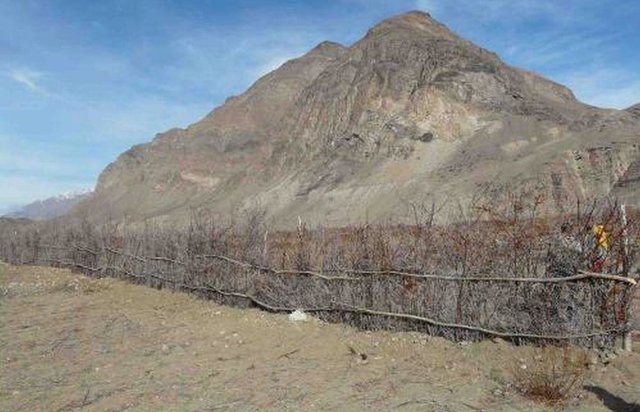
Establishment of living seabuckthorn fences for the protection … [Tajiquistão]
Protection of reforestation sites (willow, poplar and fruit trees) through living seabuckthorn perimeter fencing on Joint Forestry Management plots.
- Compilador/a: Roziya Kirgizbekova
2. Descrição da abordagem de GST
2.1 Descrição curta da abordagem
Reforestation of deserted state forest plots through a financial incentive system for the labour intensive first years of forest establishment, after which harvests of forest products from the plot provide income opportunities for the forest tenants and the State Forestry Agency (in the frame of CACILM).
2.2 Descrição detalhada da abordagem
Descrição detalhada da abordagem:
Aims / objectives: The main objective of the approach is the reforestation of a completely deserted former forest area in collaboration with the local population. However, as reforestation is highly labour intensive especially in the initial phases, this approach was developed as an incentive system to overcome this high-labour/low-income phase.
Methods: The underlying method is the implementation of Joint Forestry Management (JFM) on severely degraded forest plots (For JFM see approach TAJ015). In order to enable reforestation on such plots, an incentive system has been developed to bridge the gap when the initial workload is high, but no forest resources can yet be harvested. Therefore, selected forest tenants receive a savings book with a total amount of money to be obtained for forest rehabilitation work within the next six years. Every year clear planting and rehabilitation goals are formulated, which have to be completed by an agreed deadline. All tenants who completed their annual tasks will get access to a share of the total amount in the savings book. The annual shares gradually decreases over a period of six years, after which access to forest resources on the rehabilitated plot will be substantial enough to provide income opportunities and forest resources for their own consumption. According to the JFM contract, forest tenants hold a plot for a period of 20 years. This also applies for the savings book tenants, who act as regular JFM tenants after the subsidised reforestation period of six years is over.
Stages of implementation: The savings book approach is designed to cover a period of six years, and includes the following; (1) Before implementation; the willingness of the local population to participate needs to be assessed, the feasibility of reforestation, costs for irrigation, possibilities and the need for fencing and possible conflicts and challenges that might occur. (2) In the first year a living fence (seabuckthorn) has to be established, and the irrigation system has to be fully rehabilitated. (3) During the first three years of the approach implementation tenants will reforest one third of their plot each year (1-2 ha per household), introducing a rotation system that will be used for harvesting. (4) During years 4-6, mainly maintenance work will be conducted (pruning, fence and irrigation maintenance).
Role of stakeholders: The JFM rental contract is valid for 20 years and defines the rights and duties of the forest tenants and the State Forestry Agency. While the tenant is responsible for the agreed annual reforestation tasks, the Forestry Agency provides the required planting material, technical support and monitoring. The Micro Loan Organisation MADINA, facilitates the financial transactions required for the implementation and management of the savings books.
2.3 Fotos da abordagem
2.5 País/região/locais onde a abordagem foi aplicada
País:
Tajiquistão
Região/Estado/Província:
Tajikistan, Gorno Badakhshan Autonomous Region
Especificação adicional de localização:
Shugnan
Map
×2.6 Datas de início e término da abordagem
Indique o ano de início:
2010
Ano de término (caso a abordagem não seja mais aplicada):
2012
2.7 Tipo de abordagem
- Baseado em projeto/programa
2.8 Principais metas/objetivos da abordagem
The Approach focused mainly on SLM with other activities (Income generation, income diversification, reforestation of severely degraded forest areas, improved access to forest resources)
Reforestation and protection of severely degraded state forest plots in cooperation with the local forest users. At the same time, providing an incentive system for the initial reforestation phase, when a high workload is required but no forest products can be harvested. The main objective is therefore to combine forest rehabilitation with livelihood improvement (increased income generation and forest resource accessibility) and to directly involve the local population in the management and rehabilitation of the State forest resources close to their village. The approach will be implemented within the framework of Joint Forestry Management (see approach TAJ015).
The SLM Approach addressed the following problems: The forest area close to the village was completely destroyed during the civil war to meet urgent fuelwood needs. At the same time the State Forestry Agency does not have the necessary financial, management and control capacities to reforest degraded areas. Despite the presence of a forested area close to the village, local inhabitants do not have the labour force and the financial resources to rehabilitate the plot and the irrigation infrastructure on their own. These highly degraded or deserted forest plots aim to be re-established through the savings book approach, by combining long-term rental contracts for individual plots, financial incentives for the initial reforestation efforts, and user rights to the resources growing on the plot in future.
2.9 Condição que propiciam ou inibem a implementação de tecnologia/tecnologias aplicada(s) segundo a abordagem
Disponibilidade/acesso a recursos e serviços financeiros
- Inibitivo
On highly degraded plots the initial labour and financial input for reforestation is very high and cannot be met either by forest tenants nor by the State Forestry Agency.
Treatment through the SLM Approach: The plots are rented to local forest tenants, who receive a savings book with a certain amount of money for rehabilitation activities for six years. The work is strictly monitored and money can be accessed only if the annual tasks are completed.
Quadro institucional
- Inibitivo
The State Forestry Agency lacks the institutional capabilities to implement, manage and control reforestation and forest management activities.
Treatment through the SLM Approach: Income opportunities are handed over to local forest tenants. Forestry Agency staff are also trained in monitoring and sustainable management of the rented plots.
Quadro jurídico (posse de terra, direitos de uso da terra e da água)
- Inibitivo
Local inhabitants had no official user rights to the state forest plots close to their village and were using the plots illegally. Hence there is no real interest in rehabilitating the plots.
Treatment through the SLM Approach: The forest plots are rented and contracts, management and annual plans are established for each plot. Additionally, the major costs for reforestation are covered for the first few work intensive years.
The existing land ownership, land use rights / water rights moderately hindered the approach implementation Before the implementation of this approach the deserted forest area was governed by open access, although it formally belonged to the State Forestry Agency. Local villagers used it intensely as winter pastures. Therefore, not everybody was happy to restrict access to the area. However, it is clear to the local land users, that reforestation and irrigation rehabilitation will enable better access to forest products and fodder in the long run.
Conhecimento sobre GST, acesso a suporte técnico
- Inibitivo
The State Forestry Agency lacks financial and technical resources to rehabilitate degraded forest areas and the respective irrigation infrastructure.
Treatment through the SLM Approach: Shortcomings in irrigation are analysed and improved at the beginning of rental agreements with local villagers. Technical and financial support from the project is provided where infrastructure needs much assistance.
Carga de trabalho, disponibilidade de força de trabalho
- Inibitivo
After the collapse of the Soviet Union, the State Forestry Agency had insufficient financial and human resources to manage the state forests.
Treatment through the SLM Approach: Through Joint Forestry Management and hence also through the savings book approach the workload in the forest (but also the incomes from forest products) is shared with local forest tenants.
3. Participação e papel das partes interessadas envolvidas
3.1 Partes interessadas envolvidas na abordagem e seus papéis
- Usuários de terra/comunidades locais
Forest plot tenants are the central implementing actors for reforestation
The approach is open to all economical categories within the village, regardless of age, status or ethnicity.
Several seminars on the design and implementation of the approach were held, whereas the whole community was invited, including men and women, young and old villagers
Although women and men were equally invited and encouraged to participate in the information seminars, most of the women felt that the work that would need to be done would need to be carried out by men.
As the work to be conducted was described as hard and strenuous, no women wanted to hold a forest plot under the savings book approach. However, women participated in discussions on the implementation of the approach and sometimes also took the place of men regarding decision making and implementation.
- Especialistas em GST/ consultor agrícola
Specialists from the project and the State Forestry Agency were the main actors for the design of the approach and its adaptation to local conditions
Initially developed in Vietnam, the approach was adapted and further developed by the GIZ project. During the design process, international as well as national specialists were involved, and inputs from local forest users were integrated as well.
- Setor privado
Micro-loan organisation MADINA
- Governo local
Governmental decision makers in the sphere of forestry and environmental management (State Forestry Agency of GBAO and Shugnan District)
- Organização internacional
Deutsche Geselschaft für Internationale Zusammenarbeit GmbH (GIZ)
3.2 Envolvimento do usuários de terra/comunidades locais nas diferentes fases da abordagem
| Envolvimento do usuários de terra/comunidades locais | Especifique quem estava envolvido e descreva as atividades | |
|---|---|---|
| Iniciação/motivação | Participativo | Initial field visits, information seminars, discussions, involvement of the whole community. |
| Planejamento | Participativo | The technical planning of the approach was mainly conducted by forestry specialists, whereas the local villagers were consulted in an interactive way in order to adapt the approach to the specific conditions on site (e.g. solution of irrigation problem, planting techniques etc.). |
| Implementação | Apoio externo | After the initial reforestation phase the tenants will be involved in the participatory JFM system. |
| Monitoramento/avaliação | Participativo | Progress and results are monitored in close cooperation between the State Forestry Agency, the plot tenants and project staff. Successes and challenges are documented and discussed, which if needed lead to an adaptation in the approach design. |
| Research | Passivo | Research is currently being conducted at a the local level, involving the local population as well as Forestry Agency staff for interviews and field visits. |
3.4 Decisão sobre a seleção de tecnologia/tecnologias de GST
Especifique quem decidiu sobre a seleção de tecnologia/tecnologias a serem implementadas:
- Principalmente especialistas em GST, após consulta com usuários da terra
Explique:
The savings book approach was initially developed and tested in Vietnam. The idea to implement such an approach in GBAO came from a GIZ project. Nevertheless, the local population was involved in several discussions about the adaptation of the approach to the local conditions.
Decisions on the method of implementing the SLM Technology were made by mainly by SLM specialists with consultation of land users
4. Suporte técnico, reforço das capacidades e gestão do conhecimento
4.1 Reforço das capacidades/formação
Foi oferecida formação aos usuários da terra/outras partes interessadas?
Sim
Especifique quem foi capacitado:
- Usuários de terra
- Equipe de campo/consultores
Caso seja relevante, especifique gênero, idade, status, etnia, etc.
As for JFM (see approach TAJ015), in the first step 'mobilisers' and Forestry Agency staff were trained as field staff. In the second step, they provided training, information and advice for the forest tenants.
Tipo de formação:
- Em exercício
- Áreas de demonstração
- Reuniões públicas
- Cursos
Assuntos abordados:
Sustainable natural resource management, technical forest management (cutting and planting of trees, maintenance of a forest area, building of living seabuckthorn fences), elaboration of management plans and annual plans for a sustainable and joint management of the forest plot between forest tenants and the State Forestry Agency.
4.2 Serviço de consultoria
Os usuários de terra têm acesso a um serviço de consultoria?
Sim
Especifique se foi oferecido serviço de consultoria:
- nas áreas dos usuários da terra
Descreva/comentários:
Name of method used for advisory service: Forestry training for tenants; Key elements: Sustainable natural resource management and use, Technical training in forestry management (planting and harvesting, fencing etc.)
Advisory service is quite adequate to ensure the continuation of land conservation activities; Strong interest from tenants as well as State Forestry Agency to continue with this approach. However, due to the short time the approach is being implemented, still more training and practice will be needed to ensure an experienced, effective and reliable advisory service by Forestry Agency staff.
4.3 Fortalecimento da instituição (desenvolvimento organizacional)
As instituições foram fortalecidas ou estabelecidas através da abordagem?
- Sim, moderadamente
Especifique a que nível (níveis) as instituições foram fortalecidas ou estabelecidas:
- Local
Especifique o tipo de apoio:
- Financeiro
- Reforço das capacidades/formação
Dê mais detalhes:
The State Forestry Agency is being trained and supported to implement and monitor the approach on their own, and to offer advisory services. Additionally the forest tenants are encouraged and supported to act as a group and to advocate their needs and problems as a local civil society organisation
4.4 Monitoramento e avaliação
Monitoramento e avaliação são partes da abordagem?
Sim
Comentários:
technical aspects were ad hoc monitored by project staff, government through observations; indicators: condition of the irrigation and fencing infrastructure
socio-cultural aspects were ad hoc monitored by project staff, land users through observations; indicators: discussion of problems and challenges
economic / production aspects were regular monitored by project staff, government through observations; indicators: control of planting process, technical advice
economic / production aspects were regular monitored by project staff, government through measurements; indicators: control of seedlings planted (first 4 years), amount of harvested forest products (from 5th year on)
area treated aspects were regular monitored by project staff, government through measurements; indicators: monitoring of area planted at the end of planting period, enable withdrawal of money if satisfactory
management of Approach aspects were ad hoc monitored by project staff through observations; indicators: monitoring of successes and challenges, adaptation of approach if needed
management of Approach aspects were regular monitored by project staff through measurements; indicators: allocated funds to forest tenants, overall performance of approach: reforestation achieved
There were several changes in the Approach as a result of monitoring and evaluation: As the Saving Book Approach is implemented as a pilot project, results from monitoring and evaluation were mainly collected as lessons learnt, which will be highly helpful to adapt and perfectionnate the approach for further implementation sites.
There were no changes in the Technology as a result of monitoring and evaluation: None
4.5 Pesquisa
A pesquisa foi parte da abordagem?
Sim
- socio-economic, on-site situation analysis
Dê mais detalhes e indique quem realizou a pesquisa:
A Tajik Masters student enrolled at the university of Bayreuth is currently conducting transdisciplinary field research on the perception, willingness to participate and opportunities for further distribution of the approach in GBAO. The results will help to develop a model for further evaluation of potential sites for the approach and to identify areas of difficulty.
Research was carried out both on station and on-farm
5. Financiamento e apoio material externo
5.1 Orçamento anual para o componente de GST da abordagem
Caso o orçamento exato seja desconhecido, indique a faixa:
- 10.000-100.000
Comentários (p. ex. principais fontes de recursos/principais doadores):
Approach costs were met by the following donors: local community / land user(s) (Local forest plot tenants): 10.0%; international (Deutsche Geselschaft für Internationale Zusammenarbeit GmbH (GIZ)): 80.0%; private sector (Micro-loan organisation MADINA): 5.0%; local government (district, county, municipality, village etc) (State Forestry Agency of GBAO and Shugnan District): 5.0%
5.2 Apoio financeiro/material concedido aos usuários da terra
Os usuários da terra receberam apoio financeiro/material para a implementação de tecnologia/tecnologias?
Sim
Caso afirmativo, especifique tipo(s) de apoio, condições e fornecedor(es):
As the approach aims to reforest strongly degraded forest areas, the forest tenants are rewarded with financial compensation for the initial years without direct income opportunities from the plot.
5.3 Subsídios para entradas específicas (incluindo mão-de-obra)
- Equipamento
| Especifique quais entradas foram subsidiadas | Em que medida | Especifique os subsídios |
|---|---|---|
| Maquinário | Parcialmente financiado | partly excavator work |
| Ferramentas | Parcialmente financiado | hand tools |
- Agrícola
| Especifique quais entradas foram subsidiadas | Em que medida | Especifique os subsídios |
|---|---|---|
| seedlings | Parcialmente financiado | |
- Infraestrutura
| Especifique quais entradas foram subsidiadas | Em que medida | Especifique os subsídios |
|---|---|---|
| Irrigation infrastructure | Totalmente financiado | rehabilitation of irrigation channel and fence |
- Outro
| Outros (especifique) | Em que medida | Especifique os subsídios |
|---|---|---|
| Transport costs (planting and fencing material) | Totalmente financiado | Fuel and rent of lorry |
Se a mão-de-obra pelos usuários da terra foi uma entrada substancial, isso foi:
- Pago em dinheiro
Comentários:
Labour was carried out voluntarily as well
5.4 Crédito
Foi concedido crédito segundo a abordagem para atividades de GST?
Não
5.5 Outros incentivos ou instrumentos
Foram utilizados outros incentivos ou instrumentos para promover a implementação das tecnologias de GST?
Sim
Caso afirmativo, especifique:
The State Forestry Agency is being trained and supported to implement and monitor the approach on their own, and to offer advisory services. Additionally the forest tenants are encouraged and supported to act as a group and to advocate their needs and problems as a local civil society organisation
6. Análise de impactos e declarações finais
6.1 Impactos da abordagem
A abordagem auxiliou os usuários da terra a implementar e manter as tecnologias de GST?
- Não
- Sim, pouco
- Sim, moderadamente
- Sim, significativamente
The deserted forest area is being reforested for the benefit of the villagers and the State Forestry Agency. Due to the establishment of contracts with the local population they acquire ownership and responsibility for the forest areas close to their village.
A abordagem concedeu autonomia aos grupos social e economicamente desfavorecidos?
- Não
- Sim, pouco
- Sim, moderadamente
- Sim, significativamente
As disadvantaged groups are more dependent on the diversification of income sources, the most susceptible households could benefit from generated income through reforestation work.
A abordagem melhorou as questões de posse de terra/diretos do usuário que inibiam a implementação das tecnologias de GST?
- Não
- Sim, pouco
- Sim, moderadamente
- Sim, significativamente
Via the approach clear property and user rights have been established. Of course conflicts have so far appeared during the whole implementation process, which are being discussed whenever they occur. However, clear user rights have stopped the open access scenario and provide incentives for labour investments in conservation and reforestation activities.
Did other land users / projects adopt the Approach?
- Não
- Sim, pouco
- Sim, moderadamente
- Sim, significativamente
As the pilot project is still running no other sites have been started yet. However, there is strong interest from the forest tenants as well as the State Forestry Agency to further disseminate the approach.
Did the Approach lead to improved livelihoods / human well-being?
- Não
- Sim, pouco
- Sim, moderadamente
- Sim, significativamente
So far no increase of income or own consumption of forest products from the plot has been reached. But forest tenants get income from their savings book according to the amount of work they have done
Did the Approach help to alleviate poverty?
- Não
- Sim, pouco
- Sim, moderadamente
- Sim, significativamente
Income from the savings book reduces economic vulnerability during hard times.
6.2 Principal motivação dos usuários da terra para implementar a GST
- Produção aumentada
Increased wood production for own consumption and market
- Pagamentos/subsídios
Payments of incentives for initial reforestation contribute to livelihood
- normas e regulamentos (multas)/aplicação
Contract based legal access to forest resources
- Melhoria estética
A green forest area improves attractiveness of the village surroundings
- well-being and livelihoods improvement
Income for reforestation and access to fresh resources improve local livelihoods
6.3 Atividades de sustentabilidade de abordagem
Os usuários da terra podem manter o que foi implementado através da abordagem (sem apoio externo)?
- Incerto
Caso negativo ou incerto, especifique e comente:
Currently the approach is still in its testing phase. However, the savings book approach has been designed in a way to ensure sustainability, as after the work-intensive initial phase, the forest tenants will be able to generate income from the forest resources.
6.4 Pontos fortes/vantagens da abordagem
| Pontos fortes/vantagens/oportunidades na visão do usuário da terra |
|---|
| A financial incentive system bridges the period where a lot of work input is required, but the plot still doesn't provide any benefit. (How to sustain/ enhance this strength: Provide advisory and regular monitoring in order to allow the tenants to achieve the fixed annual goals and get access to their annual share of money.) |
| In the long run, forest tenants have a benefit from the reforested plot in the form of legal access to forest products (firewood, timber, hay, fruits and berries etc.). (How to sustain/ enhance this strength: Support the creation of marketing opportunities for forest products.) |
| Pontos fortes/vantagens/oportunidades na visão do compilador ou de outra pessoa capacitada |
|---|
| Completely deforested former forest plots can be reforested and livelihoods sustained at the same time. (How to sustain/ enhance this strength: Foster trust between the State Forestry Agency and the local forest tenants.) |
| Sustainable management of the plot in future is enabled through JFM. (How to sustain/ enhance this strength: Support ownership creation for the reforested area among tenants and the Forestry Agency.) |
6.5 Pontos fracos, desvantagens da tecnologia e formas de superá-los
| Pontos fracos/desvantagens/riscos na visão do usuário da terra | Como eles podem ser superados? |
|---|---|
| Benefits from the forest plot will be possible only after 5 to 6 years. | Bridge the initial phase with income from the savings book, build up marketing opportunities for the forest products to be harvested in future. |
| The plot will no longer be freely accessible for other land use types such as grazing of livestock. | Provide platforms to discuss arising conflicts, show and support opportunities for winter fodder production on the forest plot. |
| Pontos fracos/vantagens/riscos na visão do compilador ou de outra pessoa capacitada | Como eles podem ser superados? |
|---|---|
| Through the high initial labour input the costs for the implementation of this approach are rather high. | Document and promote experiences of the pilot project, enable dissemination, as the establishment of larger areas reduce the costs per ha. |
| The approach is designed for a time period of a minimum of six years, at the end of which there might be less external technical support. | Continue and improve training of Forestry Agency staff to enable a sustainable continuation. |
7. Referências e links
7.1 Métodos/fontes de informação
- visitas de campo, pesquisas de campo
- entrevistas com usuários de terras
Links e módulos
Expandir tudo Recolher tudoLinks

Establishment of living seabuckthorn fences for the protection … [Tajiquistão]
Protection of reforestation sites (willow, poplar and fruit trees) through living seabuckthorn perimeter fencing on Joint Forestry Management plots.
- Compilador/a: Roziya Kirgizbekova
Módulos
Não há módulos


